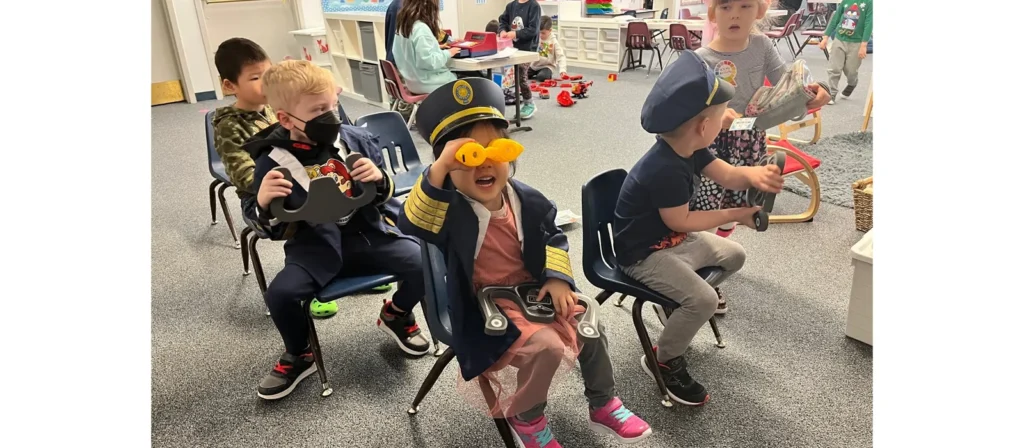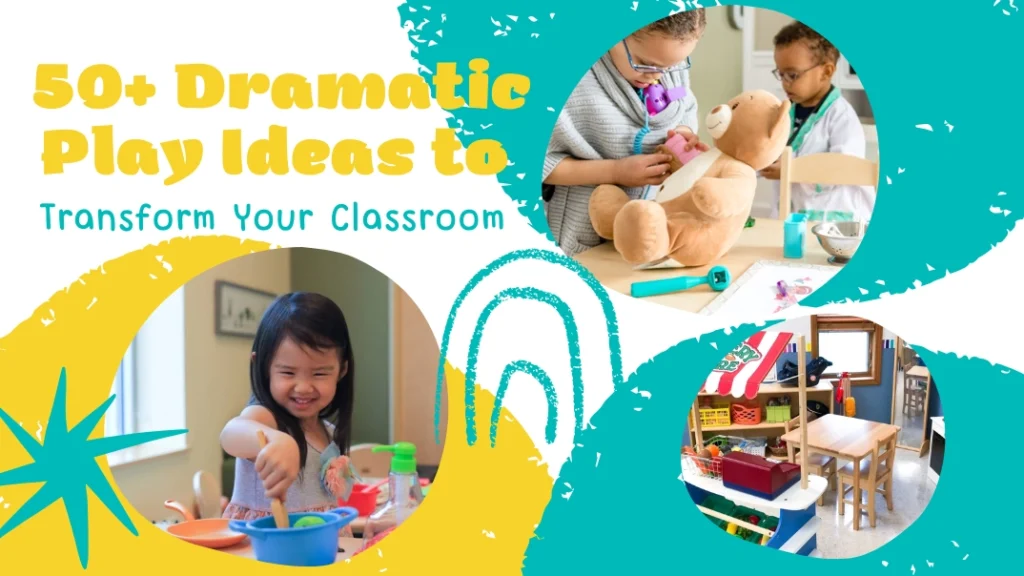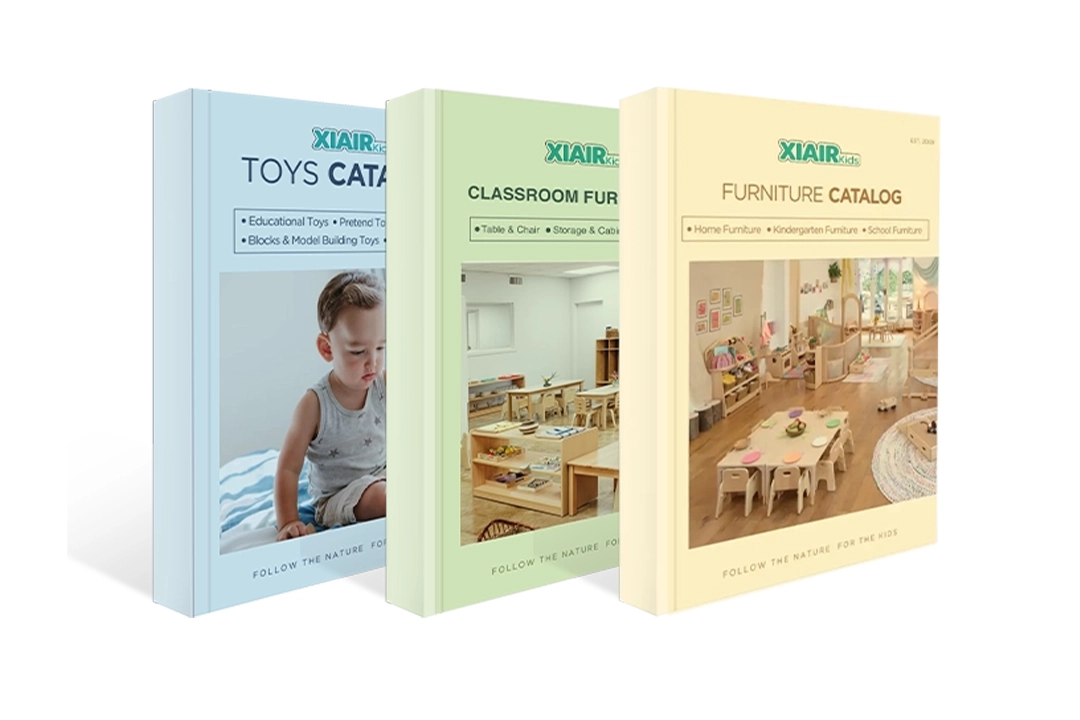Have you ever watched a child transform a cardboard box into a spaceship or put on a cape to become a superhero ready to save the world? Do you wonder why kids are so drawn to pretending, dressing up, and acting out everyday or imaginary scenarios? This natural and joyful behavior leads us to ask an important question that shapes how children learn and grow: what is dramatic play and why does it matter so much in a child’s development?
Dramatic play is the act of children stepping into imagined roles to explore ideas, emotions, and experiences. It is how they make sense of the world as they recreate what they see, feel, and wonder about through pretend scenarios. At its core, dramatic play fuels emotional growth, strengthens communication, and cultivates empathy. More than an activity, it is a powerful developmental process that helps children build identity, understand relationships, and prepare for real life challenges through creativity and connection.
In the paragraphs that follow, we will break down exactly what dramatic play is, why it is essential to early childhood development, and how caregivers can nurture this vital form of learning every day.

Trò chơi kịch là gì?
Dramatic play is a meaningful form of pretend play where children act out roles and scenarios based on real life or imagination. Whether they are running a pretend grocery store, performing a puppet show, or playing house, this type of play allows children to explore ideas, emotions, and relationships in a hands-on and engaging way. It is especially common among kindergarteners playing together, using simple props and shared imagination to build entire worlds.
When viewed through the lens of child development, dramatic play can be divided into two types: structured dramatic play and unstructured dramatic play. Structured dramatic play is typically guided by adults, with defined roles, themes, or goals. It might include classroom activities like planned role-playing exercises or story reenactments. Unstructured dramatic play, in contrast, is initiated and directed by children. It is open-ended, spontaneous, and driven by their imagination, allowing them to create their own stories and characters without external direction.
For toddlers, dramatic play often begins with simple imitation, like pretending to cook or care for a baby doll. As they grow, their pretend play becomes more complex, involving storytelling, character development, and group collaboration. Environments like a home corner or a movie theatre pretend play setup help spark imagination and support children’s dramatic play in both individual and group settings.
Explore Dramatic Play Furniture for Early Childhood Classrooms
Looking for child-sized furniture and realistic setups to support dramatic play? Discover high-quality dramatic play furniture designed to inspire creativity, collaboration, and purposeful learning in preschool and kindergarten spaces.
 View Our Dramatic Play Furniture
View Our Dramatic Play Furniture
Types of Dramatic Play
Dramatic play can be classified based on the themes, roles, and scenarios that children choose to explore during their play. These categories reflect how children draw from real life, imagination, media, and social experiences to make sense of the world. Below are several key types of dramatic play commonly observed in early childhood settings, including homes, preschools, and classrooms.
Domestic or Household Mimicry
This type of pretend play is one of the earliest forms seen in toddlers and young children. It involves imitating familiar daily routines such as cooking, cleaning, grocery shopping, or caring for a baby. It helps children practice responsibility, explore family roles, and build a sense of comfort through repetition.
Fantasy or Make-Believe
In this form, children create imaginary worlds and characters, often inspired by books, movies, or their own ideas. They may become wizards, dragons, fairies, or time travelers. Fantasy play supports creativity, abstract thinking, and emotional expression, allowing children to safely explore feelings or scenarios they might not experience in real life.
Job Roleplay
Children often mimic adults by pretending to be doctors, teachers, firefighters, police officers, or chefs. Job roleplay helps them understand the responsibilities and tools associated with different professions. It also encourages social interaction, communication, and problem-solving.
Animal Play
In this type, children take on the roles of animals such as roaring like lions, flying like birds, or crawling like insects. Animal play encourages body movement, self expression, and empathy as children imagine life from another creature’s perspective.
Construction Play
Though sometimes categorized separately, construction-themed dramatic play involves children pretending to be builders, engineers, or architects. They may use blocks, tools, or cardboard to design and “construct” their surroundings. This blends imaginative storytelling with spatial reasoning and cooperation.
Transportation Play
This includes scenarios involving vehicles such as buses, cars, trains, boats, or airplanes. Children may pretend to be passengers, drivers, or traffic controllers. This type of dramatic play supports sequencing, direction-following, and awareness of environments beyond their home or classroom.
Acts of Heroism
Children love stepping into the shoes of superheroes, rescuers, and protectors. These scenarios often involve saving others, responding to danger, or overcoming challenges. Heroic pretend play boosts confidence and helps children explore bravery, fairness, and justice.
Media Reenactment
After watching a movie, show, or reading a storybook, children often recreate scenes or characters through play. This media inspired dramatic play allows them to process what they have seen, make sense of themes, and extend their understanding through active participation.
Socio-Dramatic Play
This is one of the most advanced forms of dramatic play and typically involves two or more children collaborating in a shared scenario. They negotiate roles, develop a storyline, and work together to act it out. It supports language development, social cooperation, conflict resolution, and deeper emotional awareness.
These types of dramatic play, whether simple or elaborate, provide children with diverse opportunities to explore, learn, and grow. They are essential to fostering imagination, building skills, and helping young minds make meaning of the world.

Why is Dramatic Play Important?
Hỗ trợ Emotional Growth and Awareness
Dramatic play allows children to externalize their internal world, making it easier for them to recognize, label, and regulate emotions. By stepping into different roles, they safely explore a range of feelings in context. This process fosters emotional intelligence and lays the groundwork for empathy, resilience, and emotional balance.
Help Children Practice Self-Regulation
Engaging in dramatic play requires children to plan actions, control impulses, and adapt to evolving scenarios. These cognitive demands naturally strengthen self regulation. As children maintain character roles or follow imagined rules, they build executive function skills that are essential for academic success and social adaptation.
Teaches Real-Life Conflict Resolution Skills
Dramatic play encourages cooperative problem solving. When children negotiate roles or storyline directions, they must apply perspective taking, communication, and compromise. These interactions serve as real time practice for managing interpersonal conflict, a foundational skill in both peer and adult relationships.
Boosts Literacy and Language Use
Language is central to dramatic play. Through dialogue, narrative construction, and symbolic use of objects, children expand their vocabulary, grasp syntactic structures, and explore expressive language. These activities form a bridge between spoken and written communication, supporting early literacy development and narrative competence.
Builds Creativity and Storytelling Abilities
Dramatic play promotes divergent thinking by encouraging children to invent, imagine, and transform ideas into structured stories. This enhances symbolic thinking and strengthens cognitive flexibility. The ability to create and organize a coherent narrative is not only a marker of creativity but also a key element in later academic writing and communication.
Setting Up a Dramatic Play Area and Inspiring Creative Use
Tips for Creating a Functional and Imaginative Play Space
Creating an inviting dramatic play area doesn’t require a huge budget or complex design. What matters most is that the space encourages imagination, social interaction, and independent exploration. Ideally, it should be clearly defined, safe, and stocked with a mix of open-ended and theme-based props that children can use in flexible ways.
If you’re looking for a step-by-step guide on how to design a dramatic play space that’s both fun and developmentally enriching, be sure to check out our full article:
→ Cách tạo ra một khu vui chơi kịch tính vui nhộn và mang tính giáo dục cho trẻ mẫu giáo
This guide covers everything from choosing materials and organizing the environment to rotating themes and supporting different types of pretend play.
Explore Ready-to-Use Dramatic Play Ideas and Themes
Once your dramatic play area is set up, the next step is keeping it fresh, engaging, and developmentally relevant. One of the best ways to do this is by rotating themed setups that reflect children’s interests and real-world experiences. These themes can range from simple household routines to complex imaginary worlds, offering endless opportunities for storytelling, role exploration, and collaborative play.
Need Ideas for Your Dramatic Play Area?
Looking to spark more creativity in your classroom? Explore over 50 dramatic play setups designed to inspire imagination and learning. Perfect for preschool and kindergarten environments.
 View 50+ Dramatic Play Ideas
View 50+ Dramatic Play Ideas
Simple Ways to Promote Dramatic Play at Home and in the Classroom
Dramatic play flourishes when children feel supported, inspired, and free to explore. Whether you’re a teacher managing a classroom or a parent nurturing play at home, there are practical ways to make pretend play a regular and meaningful part of a child’s day.
Model Playful Behavior Without Taking Over
Children often imitate adults. By occasionally joining in pretend scenarios without directing them, you can model creativity and collaboration. Simple actions like pretending to place an order at a toy restaurant or asking questions in character can spark new ideas without controlling the play.
Create Time and Space for Unstructured Play
Dramatic play requires uninterrupted time. Avoid rushing children through imaginative activities. Set aside consistent blocks of time during the day when children can engage in open-ended play without transitions or distractions. This encourages deeper thinking and sustained storytelling.
Rotate Materials to Renew Interest
Keeping the same play materials for too long may lead to boredom. By rotating costumes, props, and themes regularly, you maintain novelty and challenge children to think in new ways. Even a small change, like adding cardboard steering wheels or doctor badges, can spark a whole new storyline.
Integrate Pretend Play Across Learning Areas
Pretend play does not have to be confined to a “dramatic play corner.” You can integrate it into reading time, science lessons, or outdoor play. For example, after reading a story about animals, invite children to pretend they are zookeepers. This kind of integration reinforces content learning while allowing emotional and social expression.
Be Responsive to Children’s Interests
Observe what excites your child or students, and build from there. If they’re fascinated by fire trucks, create a pretend fire station. If they love animals, encourage a vet clinic setup. Tailoring dramatic play experiences to their current interests increases engagement and makes learning more personal.
By making room for dramatic play in both structured and everyday environments, you help children develop critical life skills while also nurturing joy, creativity, and connection.
Phần kết luận
Dramatic play is far more than just fun and games. It is a core element of early childhood development. From emotional growth and self regulation to literacy, creativity, and social understanding, pretend play provides a foundation for skills that will benefit children for life. Whether in the classroom or at home, supporting dramatic play means creating space for children to imagine, express, and connect. By valuing this type of learning, we help shape confident, curious, and empathetic individuals ready to thrive in the world around them.
Frequently Asked Questions About Dramatic Play
What age is appropriate for dramatic play?
Dramatic play can begin as early as 18 to 24 months, often starting with simple imitation and pretend actions. As children grow into the preschool and kindergarten years, their play becomes more complex and socially interactive. It remains valuable well into early primary grades, adapting to the child’s expanding imagination and language skills.
What role does a teacher play in dramatic play?
Teachers act as facilitators rather than directors in dramatic play. Their role includes creating an inviting environment, providing open-ended materials, observing children’s interests, and gently extending play through thoughtful questions or thematic prompts. When appropriate, teachers may also join the play to model language, introduce new vocabulary, or support social problem-solving without taking control of the narrative.
Can dramatic play be used to support learning in other subjects?
Absolutely. Dramatic play can enhance literacy through storytelling and role-specific language, introduce math through counting or categorizing pretend items, and support science through themed setups like vet clinics or weather stations. It also reinforces social studies concepts by exploring community roles, cultural traditions, and real-world environments in a playful context.



